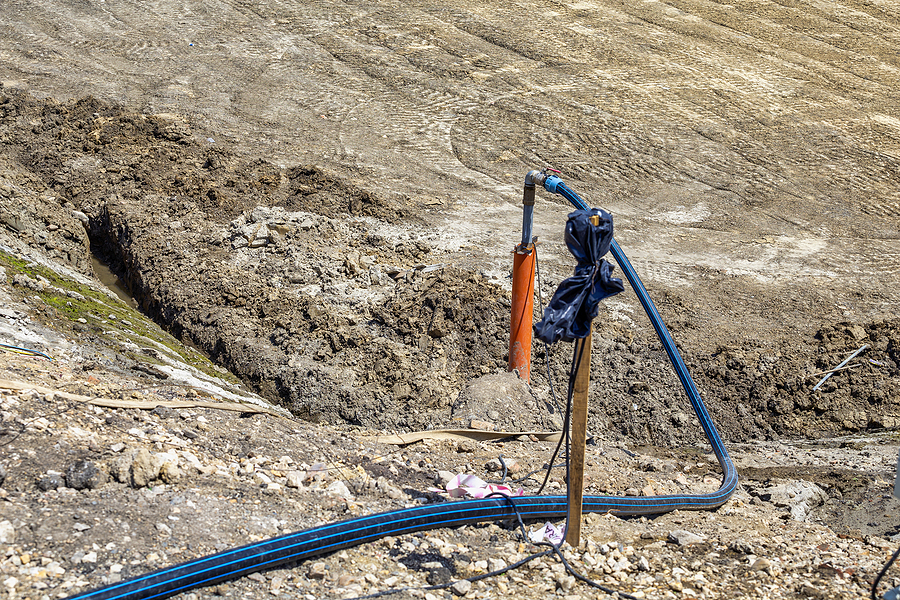Water management is essential to the success and durability of constructions in the field of civil engineering and construction. The removal of surface or groundwater from a building site, or dewatering, is an essential component of this management approach. To protect the project from potential dangers and obstacles, however, careful consideration of a number of criteria is necessary when developing an effective dewatering system.
To learn more about dewatering design, get in touch with civil engineering design firms. They can offer professional advice and help in creating customized solutions that satisfy particular project needs and guarantee a smooth integration with construction schedules. The complexities of dewatering design are examined in this article, along with a variety of techniques, important factors, and best practices to guarantee a waterproof (pun intended) approach to your upcoming project.
Understanding the Importance of Dewatering Design:
Imagine a bustling construction site. The foundation must be laid, but persistent groundwater threatens to flood the excavation. This can lead to a domino effect of delays, compromised structural integrity, and potential safety hazards.
An effective dewatering design tackles this issue head-on by:
Maintaining a dry and stable work environment: Below the water table, dewatering makes safe excavation and construction possible.
Ensuring foundation stability: By lowering the groundwater level, dewatering prevents hydrostatic pressure from compromising the foundation’s strength.
Optimizing construction timelines: A well-planned dewatering system minimizes delays caused by wet conditions, allowing construction to proceed smoothly.
Enhancing safety: Dewatering reduces the risk of slips, falls, and trench collapses often associated with saturated soil conditions.
Choosing the Right Dewatering Method:
The geology of the site, the depth of the excavation, and the amount of groundwater present all influence which dewatering technique is most appropriate for your project. Below is a summary of several frequently used techniques:
Sumps and Pumps: This is the standard method for excavating in shallow depths. In essence, sump pumps are collection trenches that are excavated to the lowest point. The collected groundwater is subsequently removed via submersible pumps.
Wellpoint Systems: Wellpoints are basically small-diameter holes drilled into the ground all the way around the boundaries of the excavation. They produce a depression cone that lowers the amount of groundwater in the confined space.
Shoring Systems: Physical barriers such as sheet piles or soldier piles keep groundwater out of the excavation. For deeper excavations, they are frequently combined with other dewatering techniques.
Drainage Trenches: Groundwater can be efficiently collected and directed away from the work area by digging ditches around the perimeter of the excavation. The ideal conditions for this technique are those with a comparatively low groundwater table.
Vacuum Excavation: This novel method removes soil particles and shallow groundwater by using strong vacuums. It works especially effectively for projects that are environmentally sensitive or include digging for utilities.
Selecting the optimal dewatering method requires careful consideration of these factors:
Site Characteristics: Type of soil, permeability, and groundwater table depth are all important factors.
Project Requirements: The dewatering approach will depend on the size and depth of the excavation.
Budgetary Constraints: The expenses of the necessary equipment, installation, and operation differ throughout approaches.
Environmental Regulations: It is necessary to take into account local laws pertaining to environmental preservation and water disposal.
Key Considerations for Effective Dewatering Design:
Once you’ve chosen the appropriate dewatering method, meticulous design becomes paramount. Here are some crucial aspects to consider:
Precise Inflow Rate Estimation: It is critical to estimate the amount of groundwater that must be extracted with accuracy. This serves as the foundation for planning the entire dewatering system and choosing pump capabilities.
Treatment and Disposal of Discharged Water: In order to adhere to environmental rules, the water extracted from the excavation might need to be treated before being disposed of. If necessary, filtering or sedimentation procedures should be included in the design.
Monitoring and Contingency Plans: It is essential to continuously monitor the dewatering system’s performance. The project will be able to manage unforeseen events if backup pumps and dewatering techniques are in place.
Optimizing Your Dewatering Design for Success:
While selecting the correct method and meticulous design are foundational, here are some additional tips to optimize your dewatering project:
Early Integration with Project Planning: Early project planning phase incorporation of dewatering factors enables a more comprehensive and economical approach.
Collaboration Between Contractor and Engineer: Clear lines of communication and cooperation between the engineer and contractor guarantee a dewatering design that complies with the project’s particular needs.
Sustainability Considerations: When dewatering, look for strategies to reduce water use and increase water recycling. This may entail the use of closed-loop dewatering devices or rainfall gathering techniques.
Summing it Up:
In conclusion, effective dewatering design is indispensable for the success and integrity of construction projects. By carefully assessing site conditions, choosing appropriate techniques, integrating dewatering with construction planning, and prioritizing environmental stewardship, civil engineering design companies can tackle risks and optimize project outcomes. Continuous monitoring and maintenance further enhance system performance, ensuring long-term reliability. Investing in robust dewatering design upfront yields dividends in project efficiency, safety, and sustainability.


















This Post Has 0 Comments